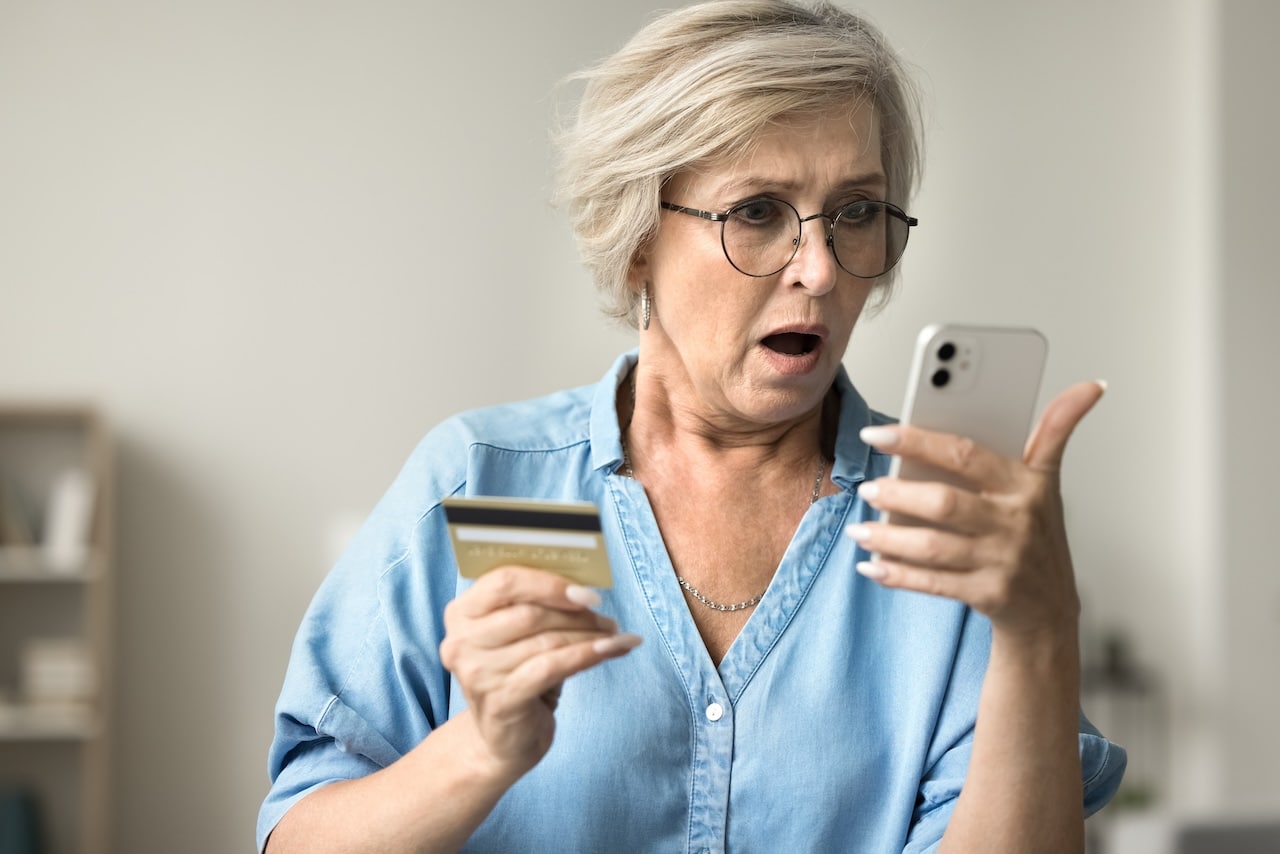Credit Sesame discusses credit card fraud, steps to avoid it and what to do if it happens to you.
In the Apple TV+ show “The Big Door Prize,” a mysterious machine offers residents of a small town a chance to learn their true life potential for a few quarters. Once inside the booth, they’re also asked for their fingerprints and Social Security number.
“Scam alert!” my brain yells as actor Chris O’Dowd and others enter their SSN and put their hands on the blue, glowing screen without questioning why. Identity theft and credit card fraud are next, I warn them. Yet no one walks out without getting a small card telling them what their life’s potential is.
This show doesn’t delve into an explanation of credit card fraud, but I’d bet that in a sequel, the characters would all be victims of this type of crime. And the owners of the blue machine would be the criminals.
What is credit card fraud?
Credit card fraud is a type of identity theft. It entails the unauthorized use of someone’s credit card by criminals to charge purchases or remove money in the card owner’s name.
A physical card can be stolen, or account numbers, PINs and other identifying information can be used to open new credit accounts fraudulently.
Credit card fraud is one of the most common kinds of fraud in the U.S. Nearly 390,000 reports of credit card fraud were made in 2021, according to the Federal Trade Commission.
Are consumers liable for credit card fraud?
If you’re the victim of credit card fraud, you’re only liable for up to $50 under federal law. Many credit card companies and banks offer $0 liability.
If caught quickly, unauthorized charges to a credit card can be reversed, and such charges can even be declined before they’re approved. Users can get a new card and account number immediately, in some cases.
But it can also be stressful. Card issuers may take months to investigate fraud, and fraud that isn’t resolved quickly could damage your credit.
Common types of fraud
Credit card fraud can come in many ways. Here are some of the most popular:
Physical theft
If your physical credit card is stolen from your purse or wallet or someone grabs it off your table at a restaurant and runs away, you should contact the police immediately. Be aware that newly issued cards can be stolen from mailboxes.
Online theft
Thieves don’t need a physical credit card to buy stuff in your name. Security breaches can lead to your credit card data being sold on the dark web. With your name, account number and security code, they could buy many things online before suspicion is aroused.
Credit card application fraud
Without a stolen credit card in hand, criminals can steal your personal information, such as your name, address, birthday and Social Security number, and then apply for a credit card in your name. You may not realize your identity has been stolen until you check your credit reports or apply for credit.
Account takeover
With stolen personal information, scammers contact credit card companies pretending to be you. They change passwords and PINs to take over the account, which you may not learn about until you try logging in to your account online or try to use your card.
How to spot suspicious activity
Awareness of the above types of fraud can help you look out for them, but other signs of suspicious activity should also be on your radar. They include:
- Someone calling or emailing you, saying they’re from the government and are asking you to pay them money you owe the government.
- Any company or person asking you for personal information via email, text or call.
- Suspicious transactions on your credit card that you don’t recognize.
- You’re receiving a credit card statement for a card you didn’t apply for.
- You’ve received a credit card you didn’t apply for.
Steps to take to avoid becoming a victim of fraud
Here are some ways to avoid becoming a victim of credit card fraud:
- Review your monthly credit card statements carefully for charges you didn’t make and withdrawals you didn’t authorize.
- Sign up for alerts from your credit card issuer for transactions over a certain amount, such as $50.
- If a credit card company calls you about suspicious activity on your card, and you didn’t request a call, hang up and call your card provider to see if there’s a problem with your account.
- Don’t leave credit cards unattended when out in public. At home, keep them in a safe place.
- Be aware of scams such as phishing emails, and use two-factor authentication to protect your online accounts.
- If you’re asked at the cash register if you want to apply for a store credit card, you may not want to do it in person. Please don’t share your personal information with the cashier, who could use it later to open a card in your name. Please don’t give them your Social Security number. Instead, review the application details online and apply when you’re at home.
What to do if you suspect fraud
If you think your credit card or personal information has been stolen or you are the victim of a fraudulent transaction, you should notify your card issuer online or by phone. Your card can be canceled and a new card with different numbers can be issued.
After that, here are some other steps you may want to take:
- Request a fraud alert from one of the three main credit reporting companies: Equifax, Experian, and TransUnion. This alert requires creditors who check your credit report to verify your identity before opening a new account, issuing an additional card, or increasing the credit limit on a card at the cardholder’s request.
- Request a free credit freeze from the credit reporting companies. Also called a security freeze, this prevents you and anyone else from opening accounts in your name.
- If your credit card provider isn’t helping, you can submit a complaint to the Consumer Financial Protection Bureau.
- File a complaint with the Federal Trade Commission, which will help you create a personal fraud recovery plan.
- File a report with your local police department if you suspect credit card fraud. Police may be unable to help much unless a card is physically stolen, but creditors may need police reports when investigating fraud claims.
- Check for fraudulent activity on your credit reports, which all three of the major credit reporting agencies are offering for free through the end of 2023.
If you enjoyed Credit card fraud and how to avoid it you may like:
- The cost of bad credit to consumers
- Preauthorization: Credit card companies cause more headaches at the pump
- Should you get a credit card?
Disclaimer: The article and information provided here is for informational purposes only and is not intended as a substitute for professional advice.




















